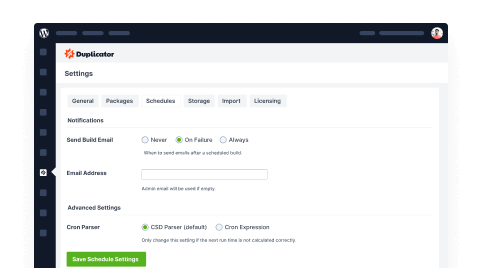Resolving the installer HTTP status code errors can be frustrating, but with the right guidance, you can troubleshoot and resolve common installer issues like 403 Forbidden, 404 Not Found, 405 Not Allowed, and Blank/White page or 500 errors.
This comprehensive guide provides detailed solutions and troubleshooting steps to help you overcome these errors when accessing the installer.
Handling the 403 Forbidden errors
When browsing to the installer.php file, you get a 403 Forbidden message.
Solution 1
The quickest solution for this issue is to contact your hosting provider and let them know the folder path and URL you are getting the 403, they will be able to quickly update the rules on their servers.
Solution 2
If you would like to try and fix the issue yourself there are many different techniques you can try, but remember every host is set up differently so some of these options may not properly work on your host and others will. Check the following guides for a solution to the 403 error:
- How to Fix the 403 Forbidden Error in WordPress
- Apache giving 403 forbidden errors – Stack Overflow
- How to resolve 403 Access Denied message?
Handling the 404 Not Found error page
When browsing to the installer.php file, you get a 404 or page not found message.
Solution 1 Contact Host
This error indicates that your web server is not setup to serve up web pages. If you’re not familiar with setting up web servers such as Apache, then the quickest way to fix this issue is to work with your hosting provider and tell them you get a 404 at “XYZ” URL. They should be able to get you up and running in minutes. This is not something the backup will be able to handle or fix, as it’s a web server configuration issue.
Solution 2 Apache Setup
When setting up the web server (typically Apache) one of the commonly overlooked setup parameters is the <Directory> directive. The following configuration will work on most setups but check with your server admin to be sure on their server:
<Directory /» Options Indexes FollowSymLinks Includes ExecCGI AllowOverride All Require all granted Allow from all </Directory»
Solution 3 Troubleshoot
To troubleshoot this issue, place two files called test.html and test.php in the same directory as the installer.php file. Then try to browse to both of them via a web browser. If neither works, then your site is not setup to serve from the location where they are placed. If only the test.html file works, then PHP may not be properly enabled on your web server. If you’re not sure how to configure your web server to serve from the proper path or serve up PHP files, then contact your hosting admin, as these are not issues that the backup will be able to fix.
Handling the 405 Not Allowed error pages
When browsing to the installer.php file, you get a 405 Not Allowed message.
Option 1 Contact Host
The 405 Method Not Allowed is an HTTP response status code indicating that the specified request HTTP method was received and recognized by the server, but the server has rejected that particular method for the requested resource. The bulk of 405 responses have to do with how the web server is configured.
The fastest way to resolve this issue is to work with your hosting company’s technical support team. Typically, what needs to be adjusted is how the web server accepts requests. The server error log on your host’s platform should help the system admin locate the specific request and adjust the server accordingly.
Option 2 Troubleshoot Server
If you are familiar with troubleshooting web server issues, you might consider reviewing this detailed article:
405 troubleshooting guide
Handling the Blank/White or 500 error pages
If the installer is not showing up at all, then there are a series of tests you can try.
- Web Server:
Check to make sure the web server is set up properly. Create a new file named test.php in the same location as the installer.php file. Inside test.php, place the following code:<?php phpinfo(); ?>
If this works, and you see the text “PHP Version” at the top followed by other PHP settings info, then continue to the other options below; if not, then something is wrong with the web server setup, and you will need to contact your host or server administrator. - Server Logs:
Examine the server error log. You may access all server error logs by going to cPanel » Statistics » Error Logs or using your host-specific control panel. If you don’t have direct access to the server logs, ask your host support to check the logs for any errors. - Permissions:
Check the permissions on the installer.php file and its parent directory. On most hosts it should be 755 for directories and 644 for files. Be sure to double-check with your hosting provider or server admin regarding the correct permission settings. - Change Browsers:
Open another web browser and check for the white screen. If it works in the new browser, then it may be a browser cache issue. You can usually fix this by holding down Ctrl+F5 or manually clearing your browser cache. - installer.php:
Some hosts and security software will automatically block requests to files named “installer.php”. In this case, try renaming the file to something else. Using the “installer.php” filename on a public server is not recommended and users should consider using the hashed installer by going to Duplicator » Settings » Backups Tab » Installer settings » Set to [name]_[hash]_[date]_installer.php. - Reverse Proxy:
When running behind a reverse proxy, the value of the original hostname is inHTTP_X_FORWARDED_HOST. To work around this setup, add the following to the top of both installer.php and dup-installer/main-installer.php:
$_SERVER[‘HTTP_X_ORIGINAL_HOST’] = $_SERVER[‘HTTP_X_FORWARDED_HOST’];


